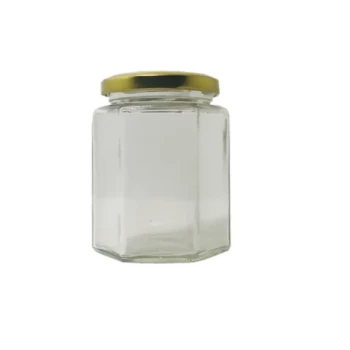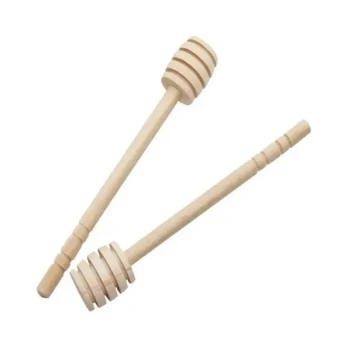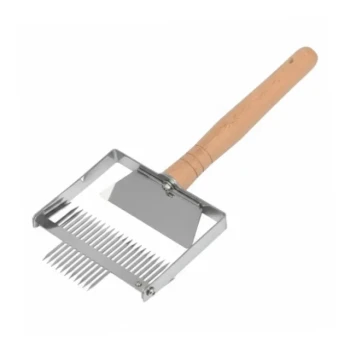To properly store raw honey, you must keep it in an airtight container in a cool, dark, and dry location. The primary goals are to prevent moisture absorption, which can cause fermentation, and to slow the natural process of crystallization while preserving the honey's delicate enzymes and flavor compounds.
Storing raw honey isn't about preventing spoilage—it's about preserving its unique character. The core principle is to shield it from its three main adversaries: temperature extremes, direct light, and exposure to air and moisture.
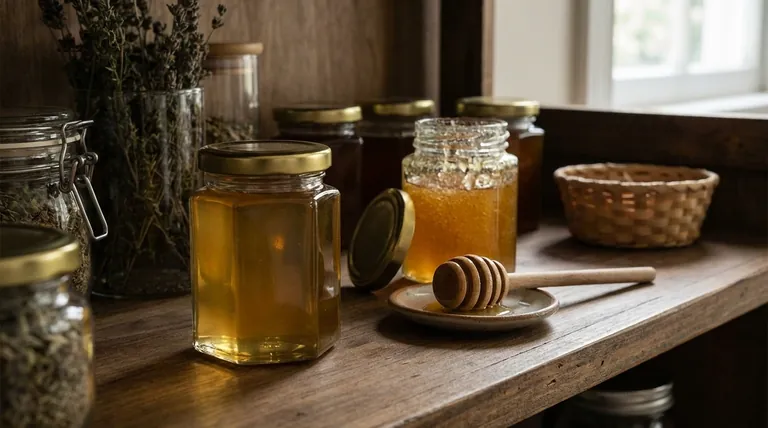
Why Proper Storage is Critical for Raw Honey
Unlike processed honey, raw honey contains beneficial enzymes, pollen, and antioxidants. These delicate components are what give raw honey its distinct flavor, texture, and nutritional profile.
Improper storage degrades these components, fundamentally changing the product. Correct storage ensures the honey you use months from now is just as good as it was on day one.
The Three Enemies of Honey Quality
To maintain the integrity of raw honey, you must protect it from three environmental factors.
Enemy #1: Temperature Fluctuations
The ideal storage temperature for honey is a stable, cool room temperature, typically between 64-75°F (18-24°C).
Extreme temperatures are detrimental. Heat, such as from being near a stove or in a sunlit spot, will degrade the delicate enzymes and darken the honey's color and flavor over time.
Excessive cold, particularly refrigeration, does not spoil honey but dramatically accelerates crystallization, turning it thick and granular much faster than it would otherwise.
Enemy #2: Light Exposure
Direct sunlight and even prolonged exposure to strong indoor light can harm raw honey.
Ultraviolet (UV) light can break down the enzymes and reduce the honey's antibacterial properties. Storing honey in a dark cupboard, pantry, or in an opaque container is essential for preserving its quality.
Enemy #3: Air and Moisture
Honey is hygroscopic, meaning it naturally absorbs moisture from the surrounding environment. This is the most significant risk for long-term storage.
If the honey's water content rises above approximately 18%, dormant yeast spores naturally present in the honey can activate, leading to fermentation. Fermented honey will have a sour, alcohol-like taste and is no longer desirable.
An airtight, food-grade container is non-negotiable. Glass jars with screw-on lids are the gold standard. Food-grade plastic or metal containers with well-sealing lids are also acceptable.
Understanding Crystallization: A Feature, Not a Flaw
Many users mistake crystallization for spoilage, but it is a completely natural process and a sign of high-quality, authentic raw honey.
What is Crystallization?
Honey is a supersaturated solution of glucose and fructose sugars. Over time, the glucose naturally separates from the water, forming tiny crystals. This makes the honey thick, grainy, and opaque.
Is Crystallized Honey Bad?
No. Crystallized honey is perfectly safe and edible. Some people even prefer its thick, spreadable texture. The process has no negative impact on the honey's nutritional value or flavor.
How to Reverse Crystallization
If you prefer liquid honey, you can easily reverse crystallization. Place the sealed jar in a bowl of warm (not boiling) water and let it sit until the crystals dissolve, stirring occasionally. Avoid microwaving, as the intense, uneven heat can destroy the beneficial enzymes you're trying to preserve.
Common Storage Pitfalls to Avoid
Even with the best intentions, simple mistakes can compromise your honey.
The Refrigerator Trap
The most common error is storing honey in the refrigerator. While it seems like a logical way to preserve food, the cold temperature is the perfect catalyst for rapid crystallization. Always opt for a cool pantry instead.
The Contamination Risk
Never introduce water into your honey. Using a wet spoon can add enough moisture to the surface layer to initiate fermentation over time. Always use a clean, dry utensil.
The Wrong Container
Using a container that doesn't seal properly is a guarantee of future problems. A simple lid placed loosely on top will not stop the honey from absorbing atmospheric moisture, leading to a high risk of fermentation.
Making the Right Choice for Your Goal
Your storage strategy should align with how you plan to use and preserve your honey.
- If your primary focus is long-term preservation: Store honey in a sealed glass jar inside a dark kitchen cabinet or pantry, far away from the stove or other heat sources.
- If you are dealing with crystallized honey: Gently place the jar in a warm water bath to re-liquefy it, ensuring you protect the raw enzymes from excessive heat.
- If you are choosing a container: Prioritize an airtight, food-grade material like glass with a tight-fitting metal lid to completely block out air and moisture.
Properly stored, your raw honey will remain a stable and delicious product for years, if not decades.
Summary Table:
| Factor | Ideal Condition | Why It Matters |
|---|---|---|
| Temperature | Cool, stable (64-75°F / 18-24°C) | Prevents enzyme degradation and slows crystallization. |
| Light | Dark location (e.g., pantry) | Protects enzymes and antibacterial properties from UV damage. |
| Container | Airtight, food-grade (e.g., glass jar) | Prevents moisture absorption and fermentation. |
| Moisture | Use a clean, dry spoon | Introducing water can trigger fermentation. |
Need Reliable Beekeeping Supplies for Your High-Quality Honey Operation?
Proper honey storage starts with the right equipment. At HONESTBEE, we supply commercial apiaries and beekeeping equipment distributors with the durable, food-grade containers and tools needed to protect your product from harvest to sale.
Let us help you maintain the quality and value of your raw honey. Contact our wholesale team today to discuss your supply needs.
Visual Guide
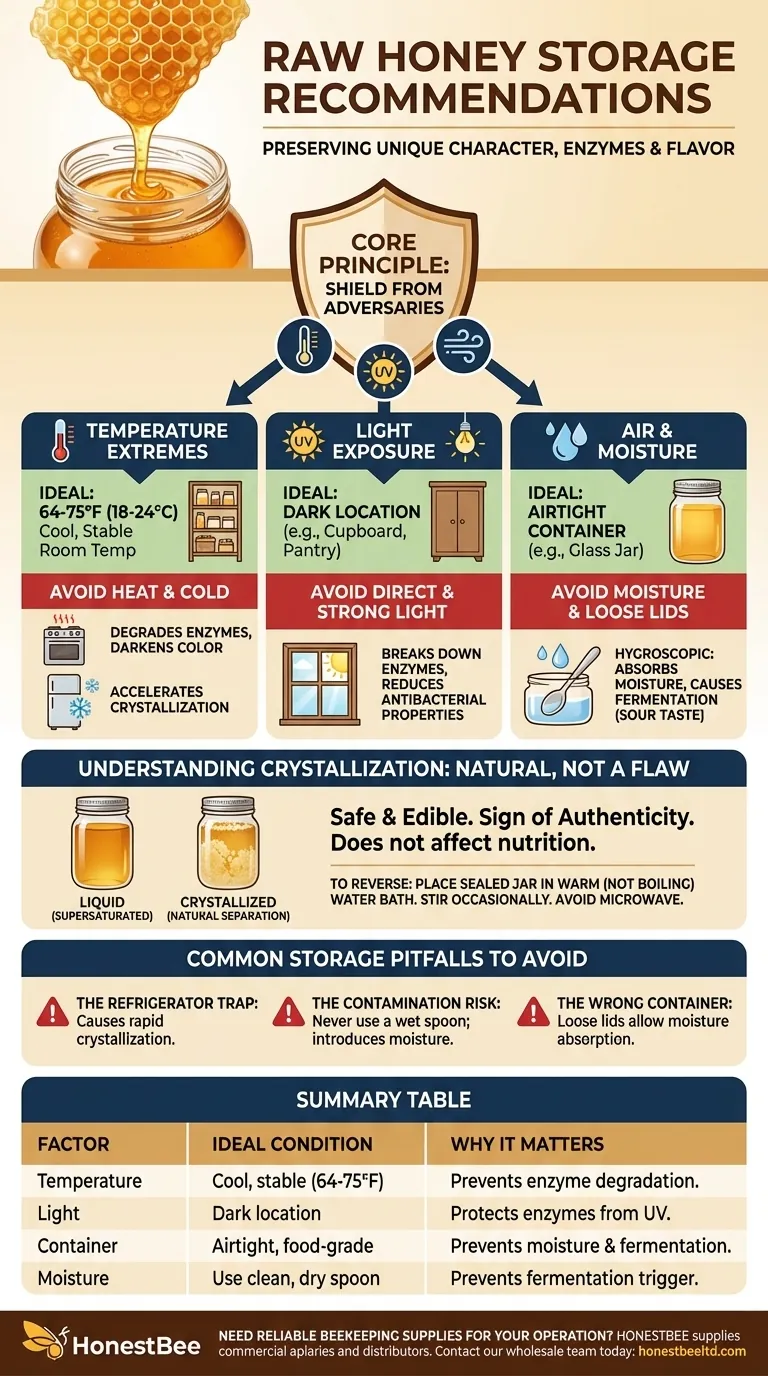
Related Products
- Hexagonal Glass Honey Jars with Metal Lug Caps Elegant Versatile Packaging
- Classic Drum Shaped Glass Honey Jar with Airtight Lid
- Inverted Squeezable Honey Jar with No Drip Flip Top Cap for Easy Pouring
- Plastic Honey Gate Spout with Wing Nut for Beekeeping Honey Bucket
- High Quality Honey Dehumidifier Dryer Thickening Machine for Beekeeping
People Also Ask
- How many jars of honey do you get from a hive? Unlock Sustainable Harvesting Secrets
- What makes raw honey more aesthetically appealing than processed honey? Discover the Beauty of Authenticity
- What is the best way to jar honey? Preserve Quality with the Right Container
- How should honey be stored and packaged? Preserve Flavor & Quality with Proper Containers
- What is the term for honey can absorb moisture from the air? Understanding Hygroscopy
